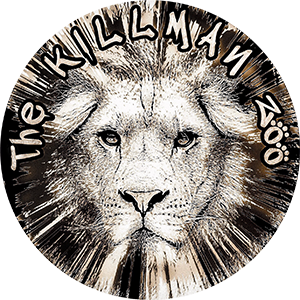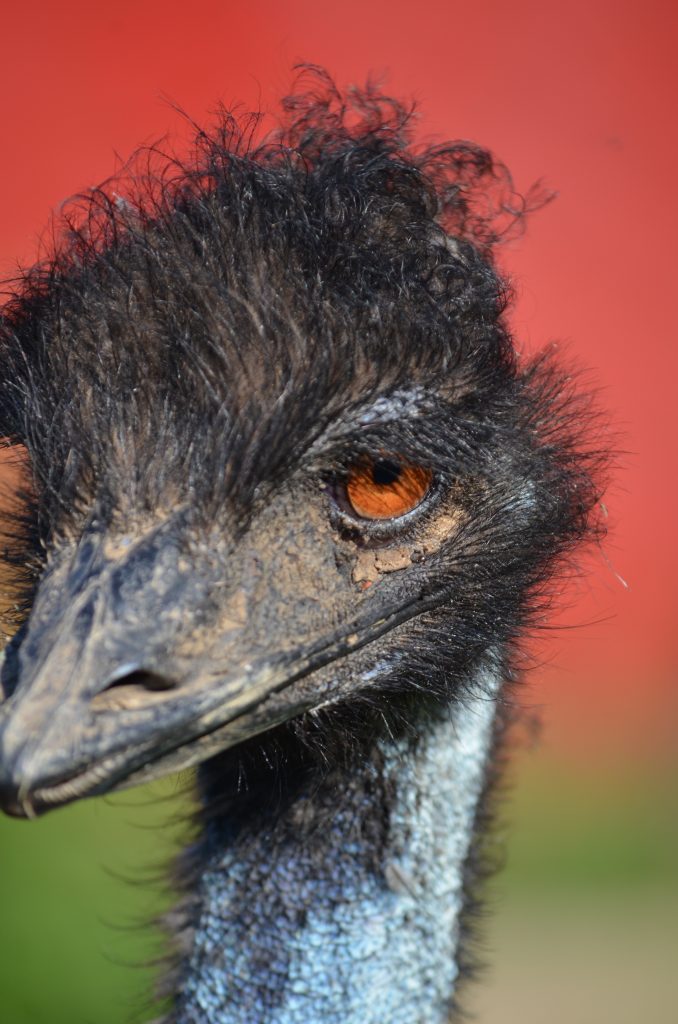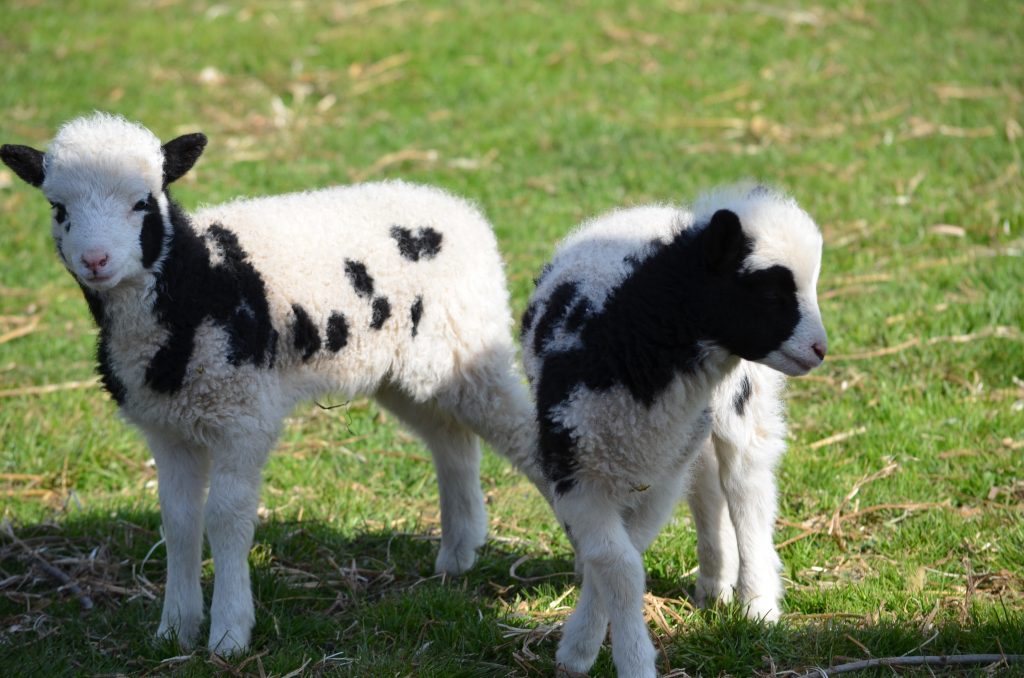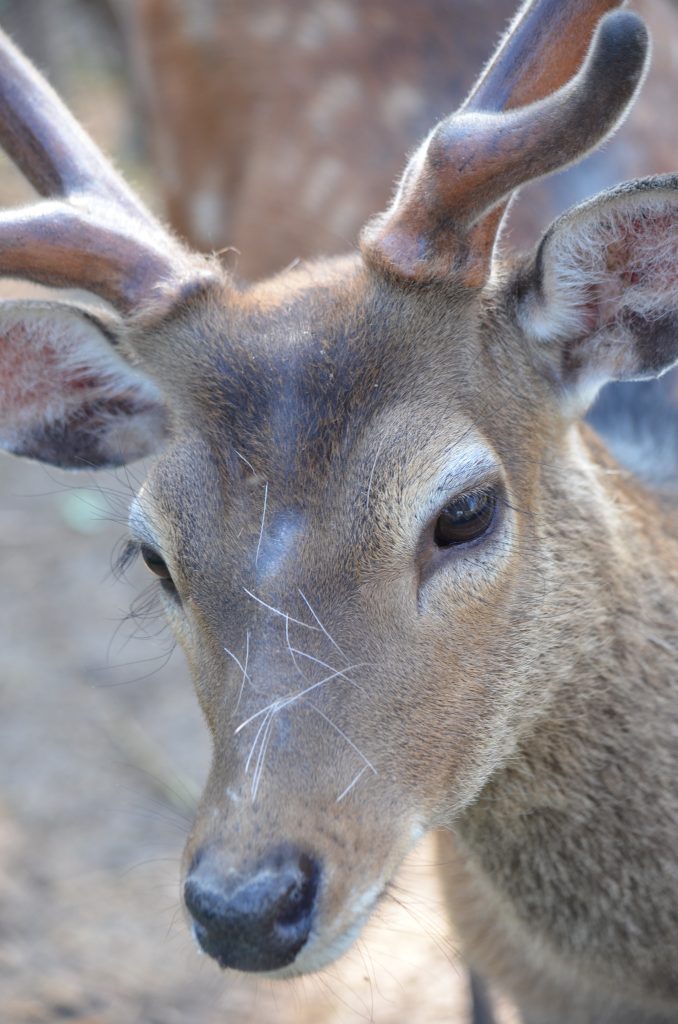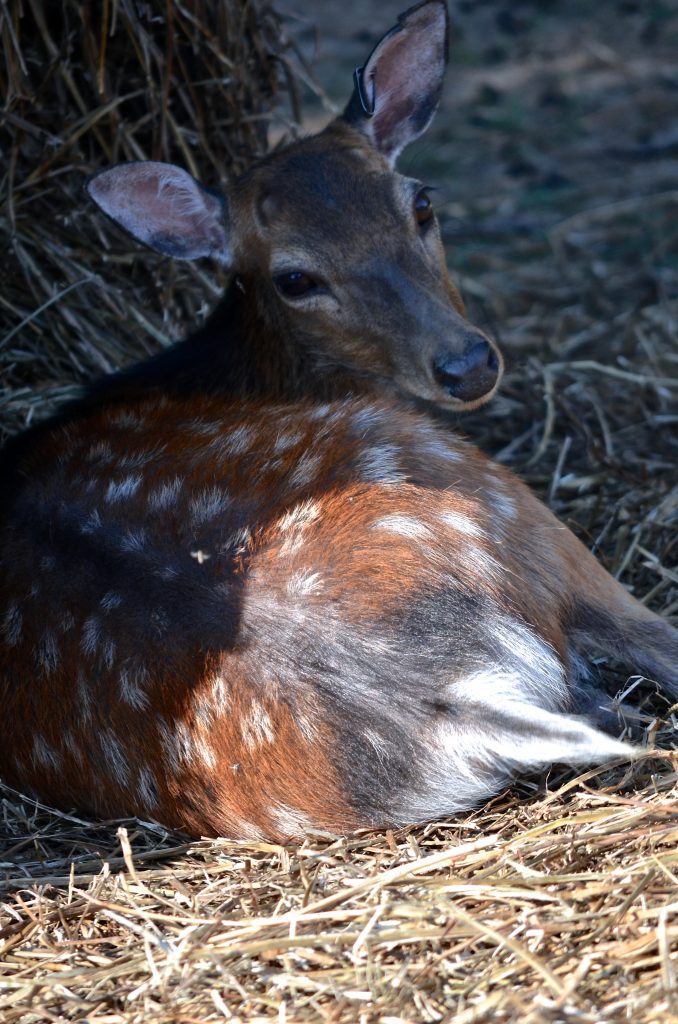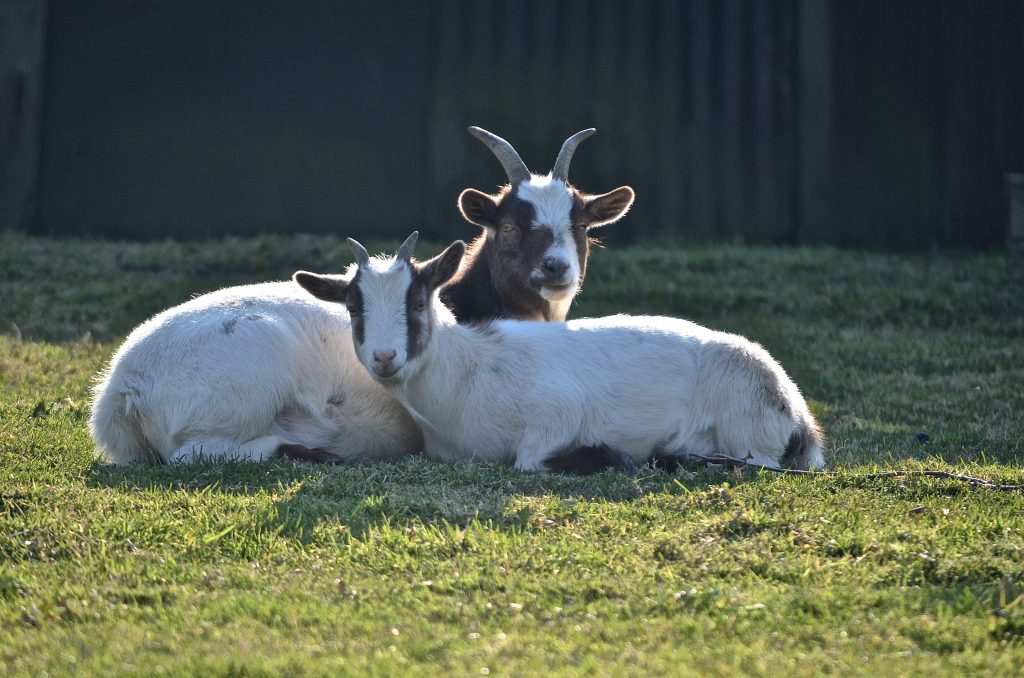Emus – Dromaius novaehollandiae
Native to Australia and in abundance, the emu is the second-largest living bird in the world. Grouped within the ratites, emus are part of the large, flightless birds, and can travel great distances with sprint speeds reaching 50 km/hour. Their diet consists of plants and insects. Females tend to be more territorial and aggressive with each other while looking for a mate, while males take on the job of egg incubation.
Come meet our emus out in the field, Amazon, Gregory Peck, and Huckleberry. Amazon, the female, is the largest of the crew and the most dominant. The other 2 boys are very curious and will come up close to the fence line for peanuts. But watch your Bling-Bling! Emus will peck anything that strikes their fancy, especially if it’s shiny.
